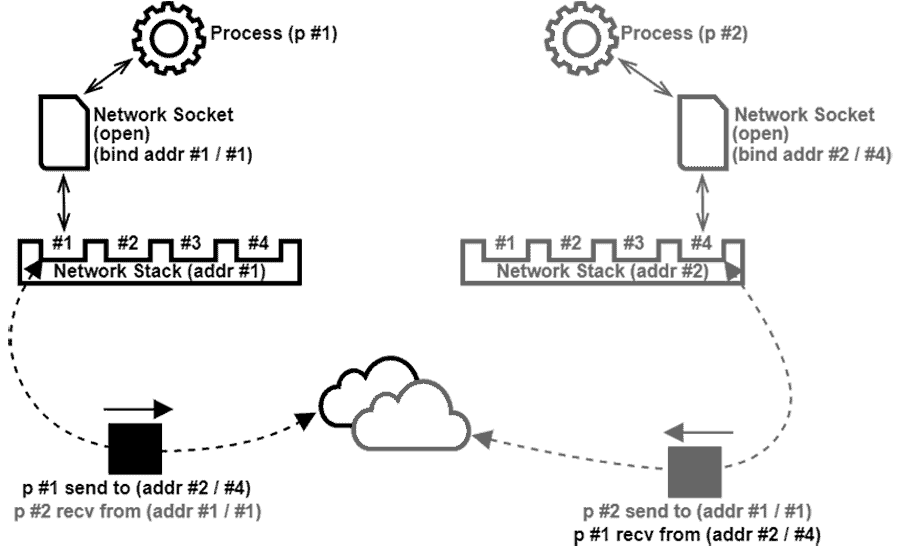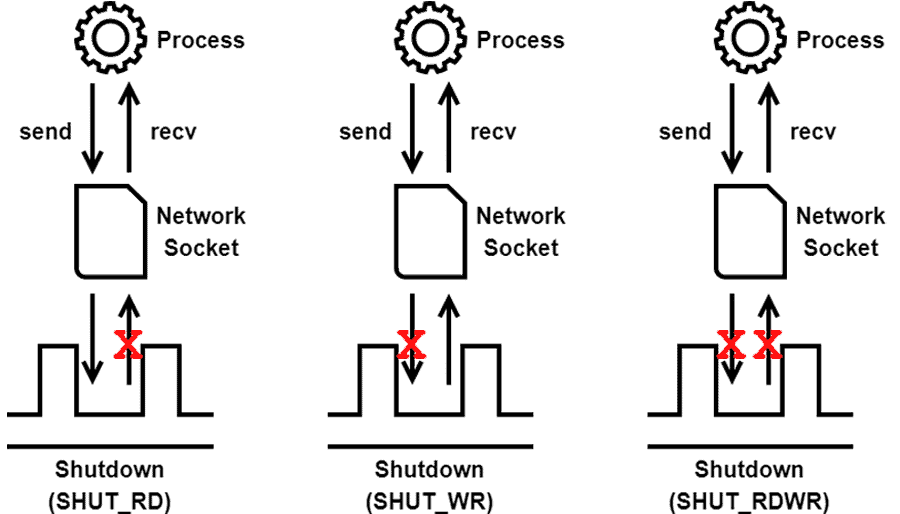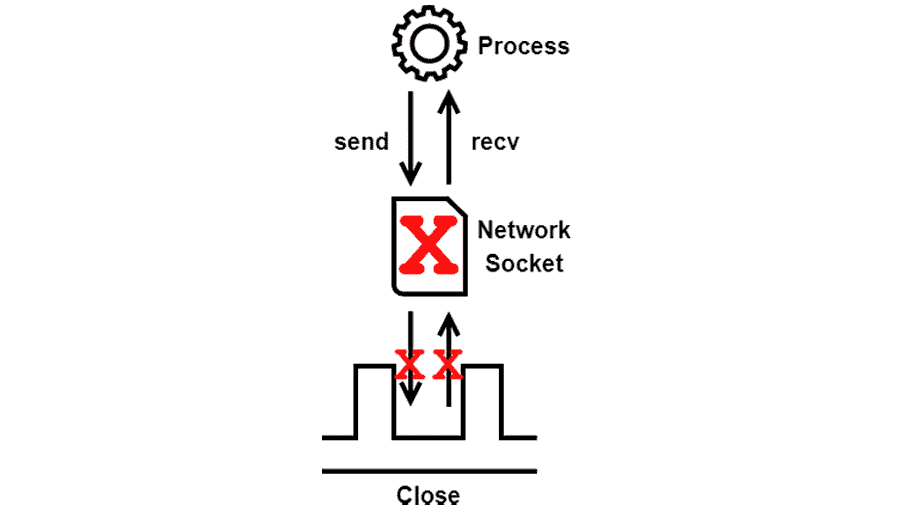1. 概述
Socket 是用于进程间通信的端点(endpoint),在现代系统中被广泛使用。常见的操作包括创建、绑定、发送、接收、关闭等。其中,shutdown 和 close 是两个用于终止通信的操作,但它们的行为和用途有明显区别。
本文将从原理和使用方式两个层面,详细讲解 shutdown 和 close 的区别,帮助你在实际开发中避免踩坑。
2. Socket 简要回顾
Socket 是进程间通信的核心机制,尤其在 TCP/IP 协议栈中扮演重要角色。我们常说的网络通信,其实大多数时候都是基于 socket 实现的。
根据通信方式的不同,socket 通常分为以下三类:
- ✅ Datagram Socket(数据报套接字):使用 UDP 协议进行通信,无连接,不保证消息顺序和可靠性。
- ✅ Stream Socket(流式套接字):使用 TCP 协议,面向连接,提供有序、可靠的数据传输。
- ✅ Raw Socket(原始套接字):直接操作 IP 数据包,常用于网络监控或自定义协议开发。
Socket 位于 TCP/IP 协议的应用层,在 OSI 模型中则属于会话层(第 5 层)。
3. Socket 的运行机制
创建一个 socket,本质上是在操作系统中申请一个文件描述符(file descriptor),这个描述符用于读写数据,实现进程间的双向通信。
- ✅ 读操作:接收来自对端的数据包。
- ✅ 写操作:向对端发送数据包。
下图展示了 socket 通信的基本流程:

当通信完成时,我们通常需要调用 shutdown 或 close 来结束通信。但这两个操作的行为截然不同,下面将详细介绍。
4. shutdown 方法详解
shutdown 并不会销毁 socket,而是有选择性地禁用其通信功能。根据传入的参数不同,可以实现以下三种行为:
✅ SHUT_RD(禁用读操作)
- 阻止 socket 接收新数据。
- 已缓存的数据仍可被读取。
- 后续读取操作将返回 0(即 EOF)。
- 不影响写操作。
✅ SHUT_WR(禁用写操作)
- 阻止 socket 发送新数据。
- 已排队的数据仍会被发送完成。
- 向连接的对端发送 FIN 标志(TCP 中)。
- 不影响读操作。
✅ SHUT_RDWR(同时禁用读写)
- 等价于同时调用 SHUT_RD 和 SHUT_WR。
- 通信完全阻断。
- 但 socket 本身仍然存在,并未被销毁。
下图总结了不同模式下 socket 的行为变化:

5. close 方法详解
close 是一个更彻底的操作:
- ✅ 销毁 socket 的文件描述符
- ✅ 断开所有连接(如 TCP 连接)
- ✅ 释放系统资源
调用 close 后,任何对该 socket 的读写操作都会触发异常。
下图展示了 close 操作后的状态变化:

⚠️ 注意:即使调用了 close,TCP 协议栈仍可能在后台维持一段时间的连接状态(如 FIN-WAIT、TIME-WAIT),直到资源真正释放。
6. shutdown 与 close 的区别总结
| 特性 | shutdown | close |
|---|---|---|
| 是否销毁 socket | ❌ 否 | ✅ 是 |
| 是否释放文件描述符 | ❌ 否 | ✅ 是 |
| 是否保留连接状态 | ✅ 是 | ❌ 否 |
| 可控性 | ✅ 高(可选读/写/读写) | ❌ 低(全关闭) |
| 多次调用 | ✅ 可多次调用 | ❌ 通常只调用一次 |
7. 实际使用建议
- ✅ 在需要单向关闭通信(如发送完数据后关闭写操作)时,使用
shutdown(SHUT_WR)。 - ✅ 当通信完全结束,且不再需要 socket 时,使用
close()。 - ✅ 在多线程或多进程环境中,确保所有引用 socket 的线程都已完成操作后再调用
close,否则可能导致资源泄露或异常。
8. 示例代码(Java)
import java.io.*;
import java.net.*;
public class SocketExample {
public static void main(String[] args) throws IOException {
ServerSocket serverSocket = new ServerSocket(8080);
Socket socket = new Socket();
socket.connect(new InetSocketAddress("localhost", 8080));
// 模拟 shutdown 写操作
socket.shutdownOutput(); // 等价于 shutdown(SHUT_WR)
// 模拟 close 操作
socket.close();
}
}
9. 小结
shutdown是“优雅关闭”的一种方式,允许你有选择地关闭读或写通道。close是“彻底销毁”,释放 socket 资源,不可再操作。- 在实际开发中,应根据业务需求选择合适的操作,避免资源泄露或连接异常。
理解 shutdown 与 close 的区别,有助于编写更健壮、高效的网络通信程序。